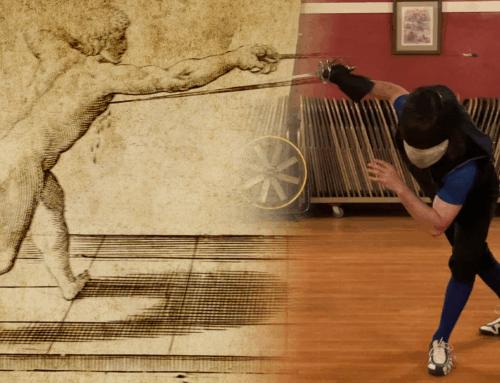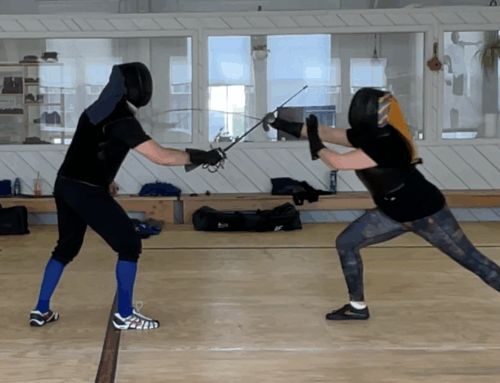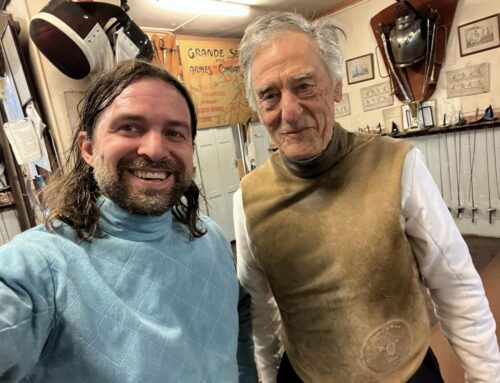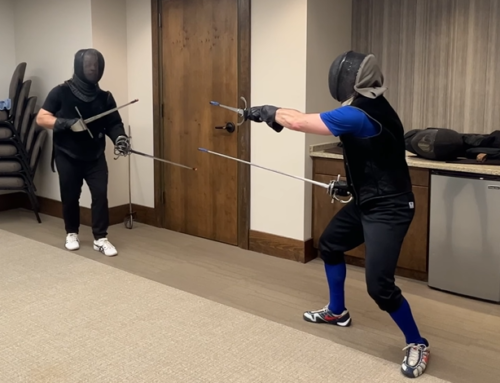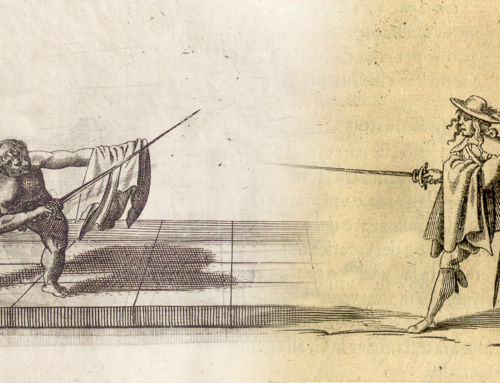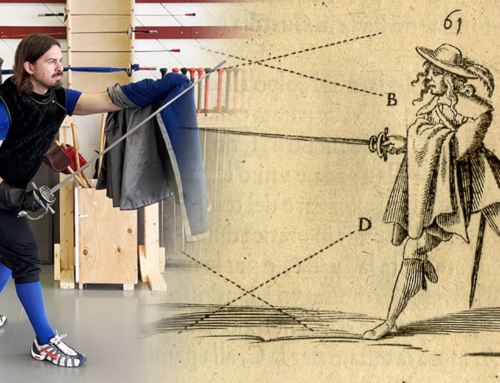🌟🤺Achievement Unlocked: Instructor at Arms in Foil!🤺🌟
This past weekend, I successfully passed the instructor exam in Italian foil at Sonoma State University’s Fencing Master Certificate Program with a solid score of 92.2% 👨🎓. This is the first of three levels one can test in — instructor, provost, and master. The SSU FMCP focuses on traditional Italian fencing with the foil, epee, and saber, though folks can also add historical fencing concentrations to their studies, as well.
I’ve been (technically) working through this process since I took SSU’s online fencing theory/history class in 2021. But it wasn’t really until 2022/23 that I decided that I eventually wanted to test. Last year was my first SSU Summer Intensive, meaning I got to test this year. It was a lot of work and test prep was challenging at times since there’s no local, certified maestros from the program up here in Boston (the closest are in Georgia). But even when I was feeling disheartened during the prep process, I promised myself I would at least take the instructor exam and then decide if I wanted to keep moving on.

I’m obviously riding a high from this weekend, but I think I want to keep pushing through to provost and eventually maestro.
The FMCP is a pretty rigorous test. It includes…
📝 Written Exam. Which I had taken previously.
👥 Group Lesson. This is done in a military style and not how I usually run classes. I was pretty nervous about this one. It was my weakest part of the test but I survived. Video later in the blog.
🗣️ Oral Exam. The Board asks you theory-related questions. Also was nervous about this but I feel like I did well.
👨🏫 Give a Lesson. I had to teach an individual lesson, make corrections, etc. More comfortable here since I do this all the time.
🤺 Take a Lesson. Basically be a student for another candidate. Got graded on form, execution, etc. Real comfortable here.
🎲 Random Actions. The Board gives you actions to teach your student on the spot. I used to dread these when I first started and now find them very enjoyable. They’re fun puzzles. I was actually looking forward to these.
I did give myself a side quest of not getting any notes from the Board about my very rapier-esque lunge and the very first note I got was, “So… you fight rapier, huh?” 😂😂

The feedback from the Board was really good. I found myself agreeing with their assessments of my performance. They also gave feedback in a very positive manner. I super appreciate the healthy testing environment they created.
The rest of the candidates worked well as a team. We all had to be one another’s students for the lessons and random actions, and wanted one another to perform well. There were seven of us testing in total (six instructor level and one provost level). The support before, during, and after examination was heartfelt and appreciative.
The entire weekend was fun. If you’re interested in classical fencing and/or historical fencing, the SSU FMCP is a great program. While this is especially true for folks interested in becoming a classical/historical fencing coach themselves, you can get a lot out of the program even if you don’t want to test. The quality of instruction you’ll get there is amazing.
Add onto things the Rapier and Saber Pedagogy Retreat (run by the same slate of maestros) and you got a really strong base for learning to become a better fencer and a better coach. Highly recommend both if you can swing it.
Questions I got for the oral exam:
- Name the lines of attack.
- Describe the use and execution of the imbrocatta.
- What are circular parries, name them and what lines they defend against.
- How do you execute the jump lunge and, in your own words, describe how/why you would use it.
The random actions the Board gave me:
- From the students engagement of 2nd, transport of 4th and Flanconade of 4th
- Teach a counter attack to that action. I chose the imbrocatta (which has an amusing story attached to that choice). The sequence: From the coach’s engagement of 2nd and transport of 4th, imbrocatta against the Flanconade of 4th
- Teach your student the third form of the renewed attack (a second attack on the advance-lunge after already having been parried).
My group and individual lesson:
- From the instructor’s invitation of 3rd, straight thrust
- From the instructor’s engagement of 3rd, disengagement
- From the student’s engagement of 3rd, glide
- From the student’s engagement of 3rd, simple parry of 4th and riposte by glide
- From the instructor’s engagement of 3rd, feint by disengagement and disengagement
- From the instructor’s engagement of 3rd, double feint by disengagement and disengagement
- From the student’s engagement of 3rd, circular parry of 3rd and riposte by glide
- From the instructor’s engagement of 3rd, feint by disengagement and deceive
- From the student’s engagement of 3rd, change of engagement of 4th and glide
- From the instructor’s engagement of 3rd, change beat of 4th and straight thrust
- End of lesson. Three straight thrusts.
Here’s a partial video of my group lesson. Folks who’ve taken classes with me will notice that this is a very different approach to how I usually teach. This type of lesson is done in a “military” style; the program went through a phase where a lot of the students were ROTC kids and testing still nods to that era of the program.
Meanwhile, if you’re in the Boston area and are interested in classical fencing, Boston Academie d’Armes runs a classical fencing class on Sundays in Somerville, MA. Come play with us!







